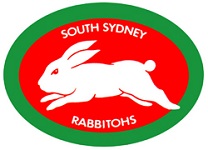

The rabbit first appeared on a Souths jersey in 1959 when the new saddle jersey was unveiled. But this story of emblem of the South Sydney Rabbitohs goes back like many things way back in time. For the uneducated the monica of the South Sydney DRLFC is not a Rabbit but a Rabbit-oh. So what is a Rabbit-oh ?
A Rabbit-oh is a person who would hunt and trap rabbits.
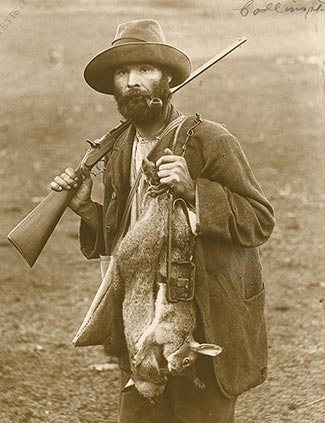
He would then cart his catch back to town
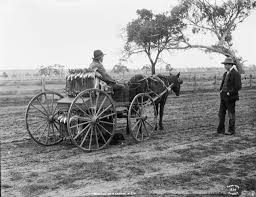
and then sell his catch in the street to his call -
Rabbit-O ! Come and get your fresh rabbits, Rabbit-O !
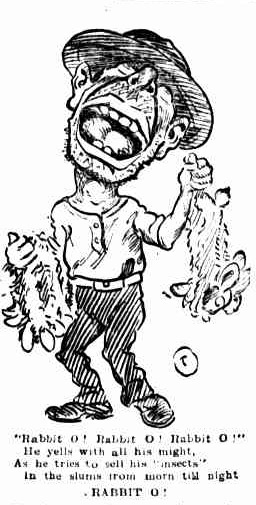
Rabbits had become a stable diet of many Australians after they had been first brought here by the First Fleeters. The remote area of Botany was a renowed area for rabbits and a happy hunting ground.
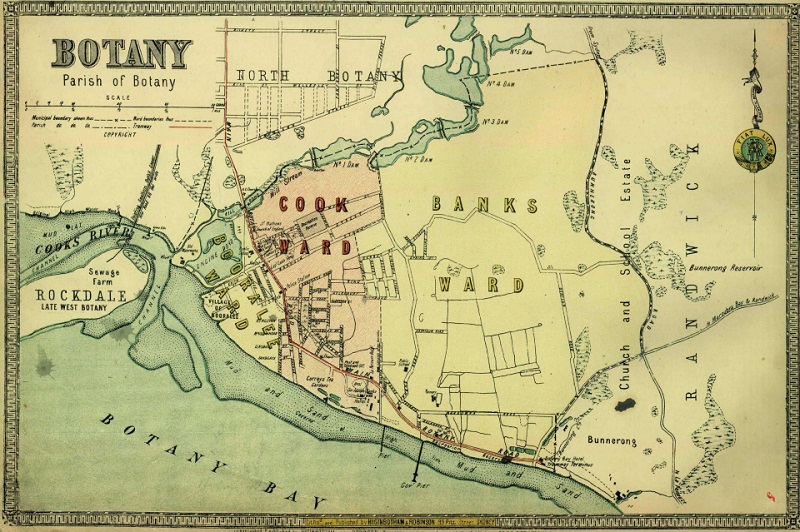
Back in 1904 and 1905 the days of the old South Sydney rugby union club, some players were Rabbit-oh's. They would wear their jerseys while wheeling their carts from which they sold rabbits. They toured the streets of Redfern, Waterloo and Surry Hills selling their catch to the familiar cry of Rabbit-Oh - Rabbits 6d for a pair. The housewives would yell back their order. Everyone ate rabbits back then.
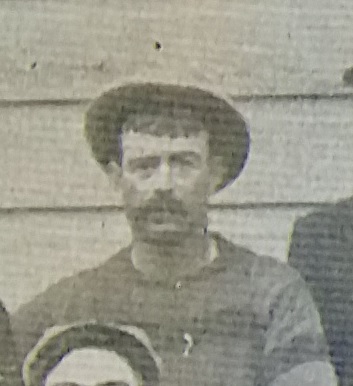
Bustler Quinsey wearing his famous jersey
Archibald Chisholm was captain of the South Sydney Rugby Union team when the Rabbitoh legend was born. He explained the legend dates back to Ernest Edmond "Bustler" Quinsey, a South Sydney dashing five-eighth who worked as a rabbitoh, selling rabbits through the streets of Surry Hills and Redfern. Bustler was a larkin. He always played in a hat and once tricked the opposition by passing the hat and then ran to score a try with the actual ball. Stan Chisholm, son of Archibald, as a boy of 8 or 9, would watch Bustler doing his rounds down Fitzroy St, with several braces of rabbits draped over each shoulder and a pack of cats in pursuit. He would gut the rabbit on the spot. Bustler would then turn up to training in his blood and fur covered jersey, as George Ball recalled.
Not only would he turn up to training in his jersey, after a week of rabbit-oh work, he would show up for the game in the same unwashed blood stained jersey covered in fur. This finally came to head in a game against Sydney University who complained to the referee about the smell. They refused to scrum down until Bustler donned a fresh shirt. Then set about shouting the derogatory nickname rabbit-oh at their working-class opponents. South Sydney team and fans emboldened by the taunt, and the legend of the Rabbitoh was born.
This carried on into the League days as players transfered across. In 1910 the papers had already labelled noisey South Sydney fans in a Glebe match as rabbit-oh supporters.
So as supporters attended matches they cheered the Rabbit-oh cry at those "Rabbitoh" players who were now on the field playing and it caught on as the unofficial symbol of the team.
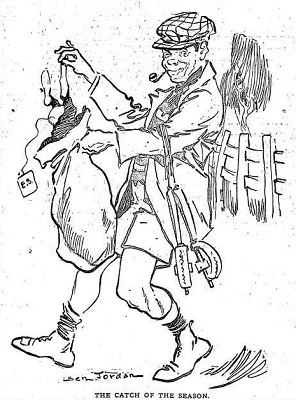
In the early days at a match at the Agricultural ground, supporters in the crowd released half a dozen rabbits onto the field prior to a big match and the rabbit was regarded as the unofficial mascot. Then again in the 1954 Grand Final a rabbit was once again released on the the field.
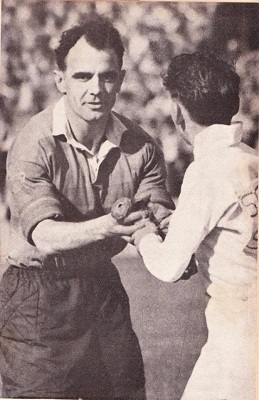
However it took years before it was accepted officially and even by newspapers. In 1959 the Rabbit became the official mascot on the new saddle jersey, designed as a plain white rabbit.
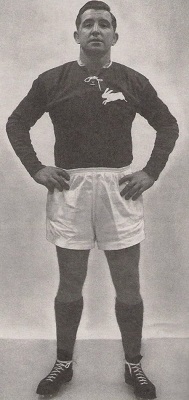
In 1978 the NSWRL took over the marketing control for the clubs and a slight change came to the emblem with the white rabbit now enclosed within a red and green football. Then in 2007 owner Russell Crowe introduced the black rabbit on the jerseys as a home / away jersey marketing tool. That year also players were also issued with a silver rabbit by the club owners as a education tool on the history of this great club. While members would obtain bronze, silver, gold or platinium rabbits as a reward for membership loyalty.
© 2024 SSR Almanac / HOME / RETURN